The 7-day Machame Route is one of the most popular ways to reach the summit of Mount Kilimanjaro, and for good reason. This route—affectionately called the “Whiskey Route” due to its more challenging nature compared to the “Coca-Cola Route”—offers stunning scenery, a rich sense of adventure, and a real chance of standing on Africa’s highest peak. But what makes the 7-day Machame Route special, and why should you consider it for your Kilimanjaro trek? Let’s dive into everything you need to know about this iconic journey to the roof of Africa.
Why Choose the 7-day Machame Route?
There are multiple ways to reach Kilimanjaro’s Uhuru Peak, but the 7-day Machame Route stands out for its balance between challenge and success. While some people opt for shorter 6-day versions, the extra day on the 7-day itinerary is a game-changer. It allows your body more time to acclimatize to the altitude, which means a higher chance of summiting without falling victim to altitude sickness. Trust us—this makes all the difference.
By spreading the trek over seven days, you also get to experience the journey at a more relaxed pace. Instead of racing to the top, you can soak in the stunning views as you pass through Kilimanjaro’s diverse climate zones—from lush rainforests to alpine deserts and, finally, the glacier-capped summit.
What Makes the Machame Route Unique?
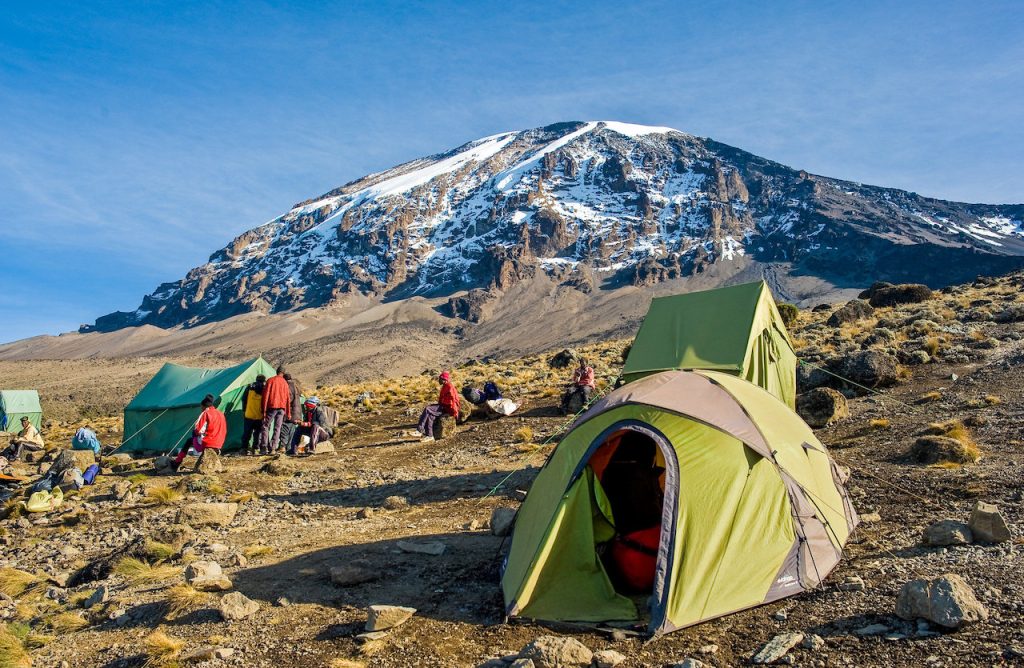 One of the biggest draws of the Machame Route is the scenery. This route offers a variety of landscapes that will make you feel like you’re trekking through entirely different worlds every day. You’ll start your hike in the humid, wildlife-rich rainforest at the base of the mountain. As you climb higher, you’ll walk through misty moorlands, with hardy plants like giant heathers dotting the landscape. Next, the trail opens up onto the Shira Plateau, where vast panoramas of Mount Meru and the Great Rift Valley unfold before you.
One of the biggest draws of the Machame Route is the scenery. This route offers a variety of landscapes that will make you feel like you’re trekking through entirely different worlds every day. You’ll start your hike in the humid, wildlife-rich rainforest at the base of the mountain. As you climb higher, you’ll walk through misty moorlands, with hardy plants like giant heathers dotting the landscape. Next, the trail opens up onto the Shira Plateau, where vast panoramas of Mount Meru and the Great Rift Valley unfold before you.
Further up, you’ll face the challenge of the Lava Tower and the thrilling scramble up the Barranco Wall—don’t worry, it’s more fun than it sounds! And of course, the ultimate reward is reaching Uhuru Peak at 5,895 meters, where the view from Africa’s highest point will leave you breathless (literally and figuratively).
Is the 7-day Machame Route Right for You?
The 7-day Machame Route is moderately challenging, making it ideal for those who have a decent level of fitness. It’s not a technical climb, so you don’t need any mountaineering experience, but you should be prepared for long days of hiking and steep ascents. The additional day gives your body time to adjust to the altitude, which reduces the risk of altitude sickness and increases your chances of making it to the summit.
While the route is not the easiest on the mountain, many first-time climbers successfully complete it. And if you’re worried about the difficulty, remember that your guides will be with you every step of the way, monitoring your health and keeping you motivated.
What to Expect on Machame: Weather and Timing
Kilimanjaro is a mountain of contrasts, and the Machame Route takes you through a wide range of climates. You’ll start in warm, humid rainforest conditions and finish in freezing, thin-aired glaciers. This means that you’ll need to be prepared for all kinds of weather—layers are your best friend here.
The best time to climb Kilimanjaro via the Machame Route is during the dry seasons, which are from June to October and from January to February. These months offer clearer skies and better conditions, making your trek not only more enjoyable but also safer. However, keep in mind that even in the dry season, Kilimanjaro can surprise you with rain or snow, especially as you get higher.
Accommodation on the Machame Route
Unlike some other Kilimanjaro routes that offer hut accommodations, the Machame Route is a camping trek. That means you’ll be sleeping in tents at designated campsites each night. But don’t worry—our team at Kilimanjaro Climbing ensures that your camping experience is as comfortable as possible. Our porters carry all the equipment, set up camp, and make sure you have a warm meal waiting for you at the end of each day.
This camping experience is part of what makes the Machame Route so unique and immersive. Waking up to a sunrise over the mountain, eating breakfast with the clouds below you—it’s all part of the adventure.
Success Rate of the 7-day Machame Route
Here’s some good news: the 7-day Machame Route has one of the highest summit success rates on Kilimanjaro. The extra day gives you more time to acclimatize, which is key to avoiding altitude sickness. Many trekkers report that the steady pace and well-timed rest days made all the difference in reaching the summit.
In fact, approximately 85% of trekkers on the 7-day Machame Route successfully make it to Uhuru Peak. Compare that to the 6-day version, which has a lower success rate, and you’ll see why that extra day is so valuable.
Check out success rates for other routes like the 6 days Marangu Route on Mount Kilimanjaro.
Preparing for Your Machame Route Trek
To make the most of your Kilimanjaro adventure, it’s important to prepare physically and mentally. We recommend doing cardio workouts, strength training, and going on practice hikes with a weighted backpack to simulate what you’ll experience on the mountain. And don’t forget to practice walking uphill—there’s plenty of that on the Machame Route!
Beyond physical preparation, it’s essential to pack wisely. You’ll need layered clothing to handle the changing temperatures, sturdy hiking boots, a quality sleeping bag, and trekking poles. Check out our detailed packing guide to make sure you have everything you need for the journey.
Frequently asked questions about 7-Day Machame Route
Question: How difficult is the 7-day Machame Route?
Answer: The Machame Route is moderately difficult, but the 7-day version allows for better acclimatization, making it more manageable.
Question: What is the success rate for the 7-day Machame Route?
Answer: The success rate is around 85%, thanks to the extra day for acclimatization.
Question: What is the difference between the 6-day and 7-day Machame itineraries?
Answer: The 7-day itinerary offers an extra day to adjust to the altitude, improving your chances of reaching the summit.
Question: Is the Machame Route good for beginners?
Answer: Yes, but climbers should be prepared for a challenging trek. No technical skills are required, but a good fitness level is recommended.
A Commitment to Responsible Travel
At Kilimanjaro Climbing, we’re committed to responsible travel. When you trek with us, you’re not only embarking on a personal adventure—you’re also supporting local communities. We employ local guides, porters, and staff who know the mountain like the back of their hands. We also take care to minimize our environmental impact by adhering to strict “Leave No Trace” principles. Kilimanjaro is a natural wonder, and it’s up to all of us to protect it for future generations.
Arrival into Kilimanjaro Airport - Transfer to Moshi
You will be picked up from the airport by our guide and driven to your hotel, where you will spend the night. After settling in, the guide will then check the equipment to make sure that it is in place and in good condition, and a briefing for the next day and what to expect during the climb will also be carried out.
Machame Gate to Machame Camp
Duration: 5 to 7 hours
Zone: rainforest
Distance: 11km
Elevation: 9350 feet to 2850 feet
Meals: breakfast, lunch, and dinner
We will drive from Arusha to Machame Gate for one and a half hours, and upon arrival, we will register at the gate before starting the climb through the rainforest. The trek will take us through the rainforest zone, climbing an elevation of 9350 feet to 2850 feet to get to Machame camp for the night.
Machame Camp to Shira Camp
Duration: 4 to 6 hours
Zone: moorland
Distance: 5km
Elevation: 12621ft
Meals: breakfast, lunch, and dinner
We start our second day with breakfast at the Machame camp, start the hike through the rainforest, and go through the moorland zone the higher we go. The moorland is the second ecological zone on the mountain, characterized by fewer plants and fewer trees as compared to the rainforest. Lunch will be provided, and depending on how fast or slow we hike, we shall get to the Shira camp late in the afternoon, where we shall spend the night.
Shira Camp to Barranco Camp
Duration: 6 to 8 hours
Zone: Alpine desert
Distance: 2 to 3 hours
Elevation: 15190 feet to 13044 feet
Elevation: 12500 feet to 15233 feet at the Lava Tower and 13044 feet down to the camp.
We start our 3rd-day trek early in the morning at Shira Camp after breakfast before heading to our next stop, which is Barranco camp. We will be ascending into the alpine desert towards Kibo Peak while taking it slow. A short stop is made at the Lava Tower, where we will have lunch before descending from the 300-foot wall of the Lava Tower to the Barranco camp through the valley. As you continue the trek to the camp, you get to go through the lush garden that is filled with giant and strange grasses and giant lobelias. Day 3 is the best day to achieve acclimatization after the night spent at the Barranco camt
Barranco to Karanga Camp
Duration: 4 to 5 hours
Zone: Alpine Zone
Elevation: 13106ft
Breakfast is served early in the morning in preparation for the day’s hike, which starts from Barranco camp at 13066 feet, crosses the Barranco wall where the guides will assist you where needed, before getting to the Karanga camp at an elevation of 13106 feet. The night is spent at the camp as you prepare for your hike the next day.
Karanga Camp to Barafu Camp
Duration: 4 to 5 hours
Zone: Alpine desert
Elevation: 15239ft
Distance: 4km
The day 5 hike leads you to the intersection where the trail from Karanga connects with the Mweka trail, which connects around the rocky terrain that leads to the Barafu Camp. Barafu Camp marks the end of the southern circuit route, which offers all-round views of the Kibo and Uhuru peak. We will set camp at the Barafu camp for dinner and the night before attempting the summit at midnight. The views of Mount Kilimanjaro peaks are very visible from Barafu, and these are Mawenzi and Kibo peaks.
Barafu Camp to the Summit - Descend to Mweka Camp
Duration: 7 to 8 hours (ascent) and 4 to 6 hours (descent).
Zone: Arctic (ascent) and rainforest (descent)
Elevation: 15331 ft. to 19341 ft. (ascent) and 19341 ft. to 10065 ft. (descent)
Distance: 5km (ascent) and 12km (descent).
Day 6 is for getting to the summit, and the hike begins around midnight or 2:00 a.m. after a light meal. Pushing to the summit is done at a slow pace to avoid altitude sickness and the cold, making it the toughest hike of all the hike days. When you double the challenging route, coldness, and steep elevation, it becomes hard for some hikers, and that is why there are short breaks in between. The Stella point at 18900 feet has the best sunrise view over Mawenzi, and the summit is just an hour away from the Stella point. You finally get to the highest point in Africa after hiking through thick layers of snow at Uhuru Peak.
After the celebrations, we make our descent back to Mweka hut camp with a lunch break at Barafu camp. After passing through the rocky trail towards Mweka camp, we get to the camp late in the afternoon, freshen up, and enjoy our last dinner on the mountain before resting.
Mweka camp to Mweka gate. Transfer to Moshi / Arusha
Duration: 3 to 4 hours
Distance: 10km
Zone: rainforest
Elevation: 12467 feet to 5380 feet
After breakfast, the descent through the tropical rainforest begins around midday, as this is the last day on Mount Kilimanjaro. When you get to the Mweka Gate, our guide will be waiting to drive you back to your hotel, where a celebratory dinner will be waiting for you. After resting and freshening up, you need to get ready to either be driven back to the airport or to your next destination in Tanzania and the rest of East Africa.
Prices for 7 Days Kilimanjaro Hike through Machame Route

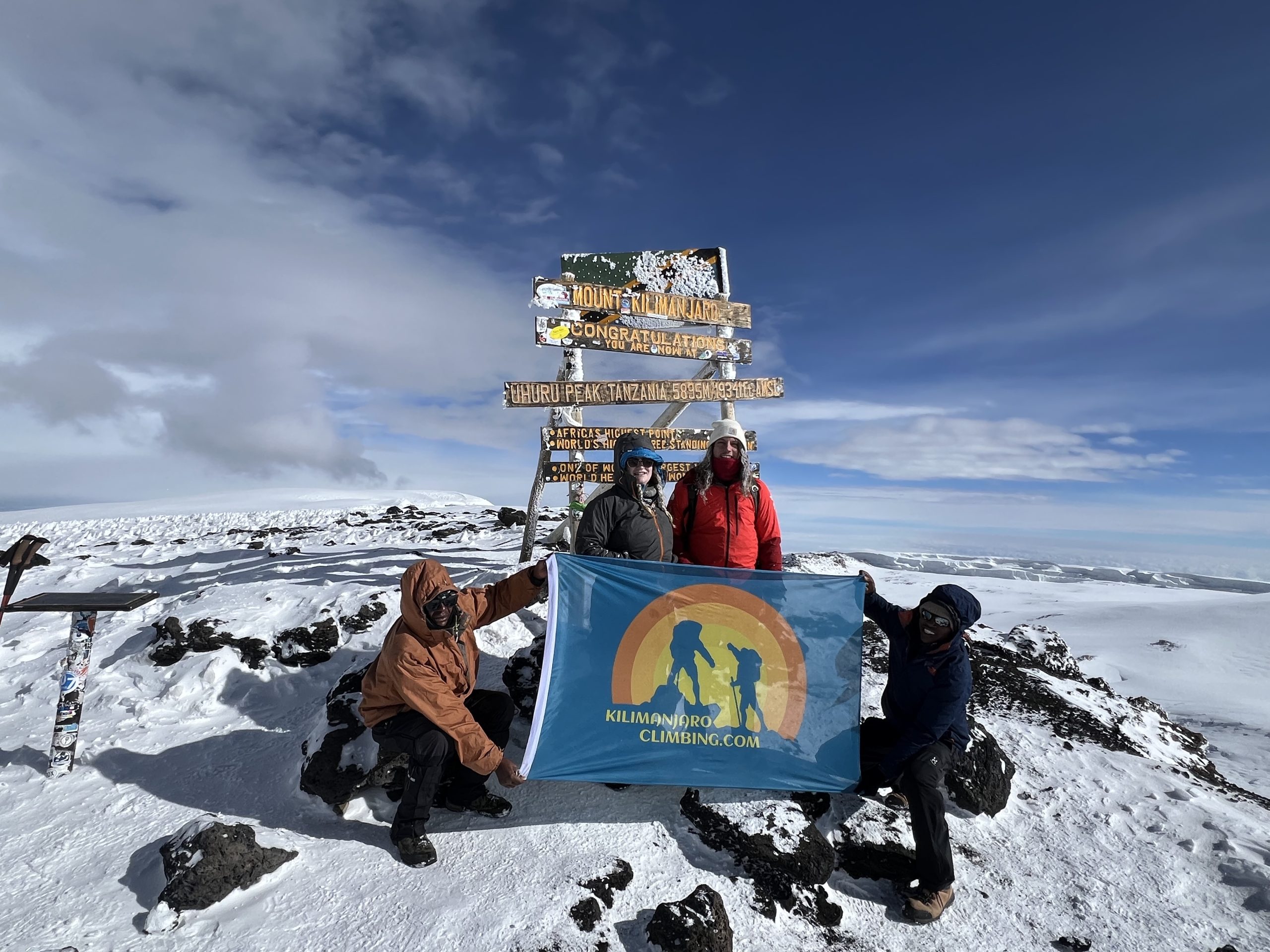
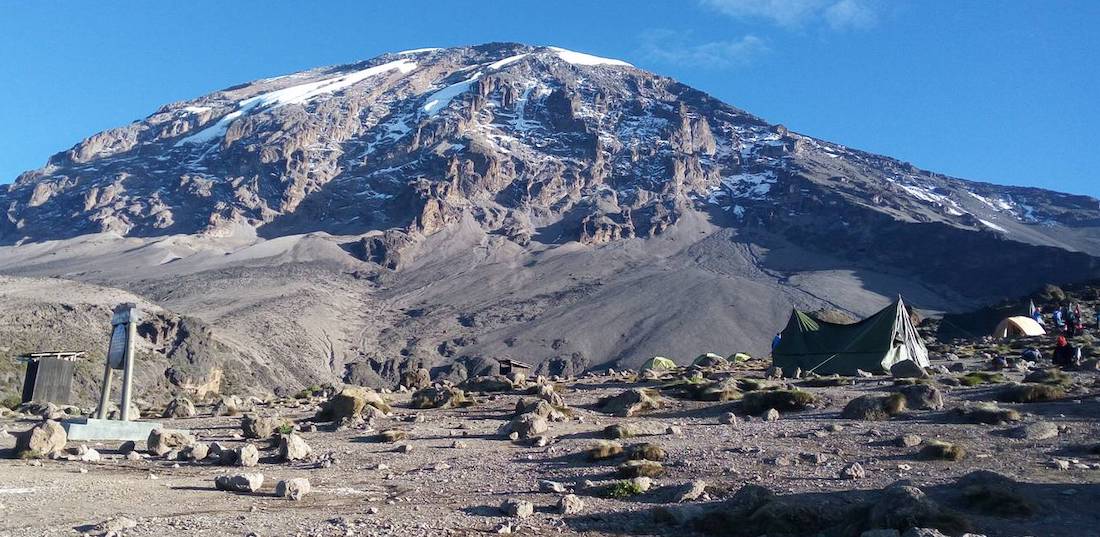
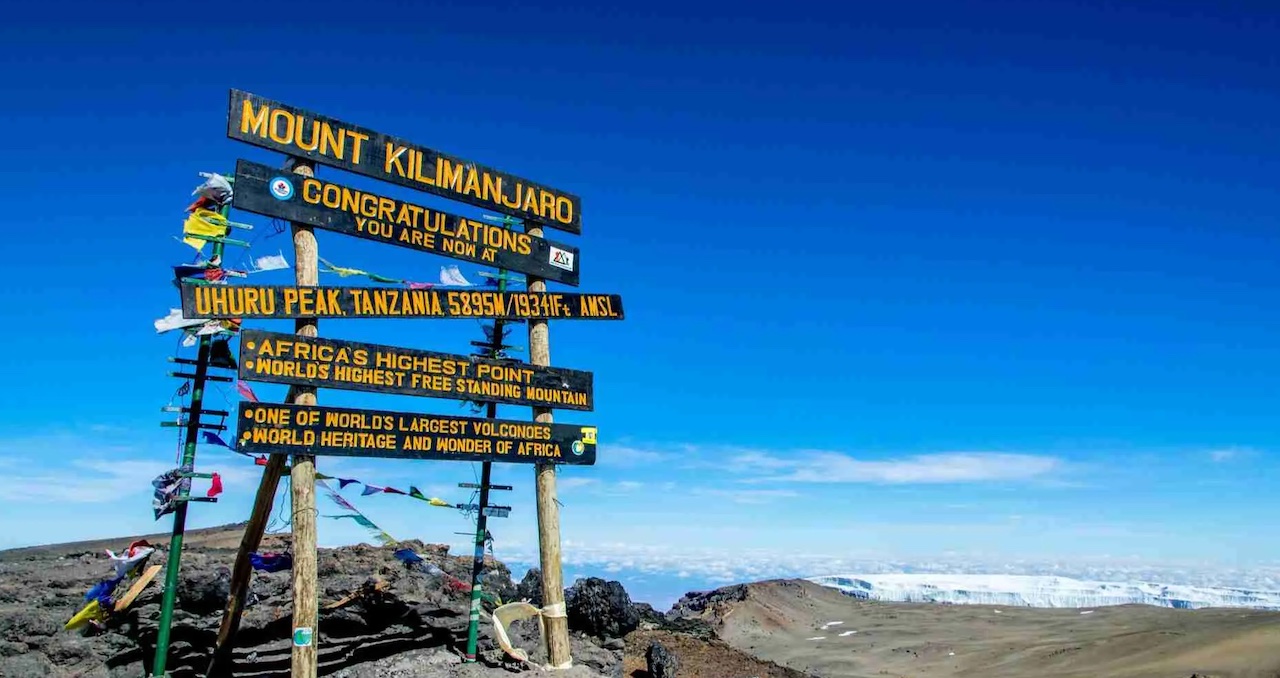
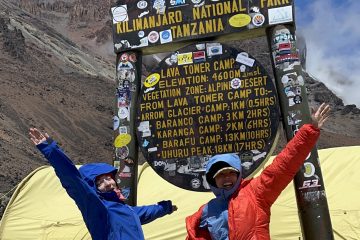
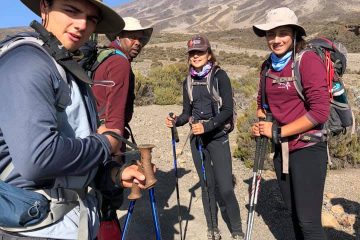
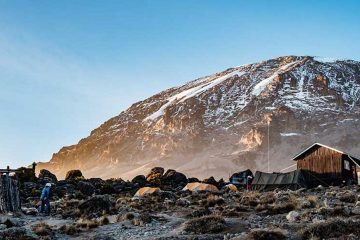
Tour Reviews
There are no reviews yet.
Leave a Review